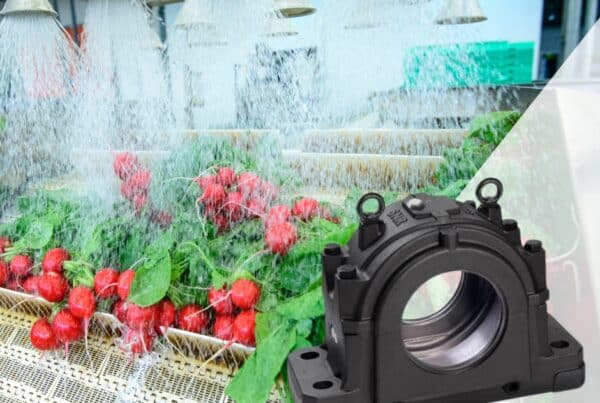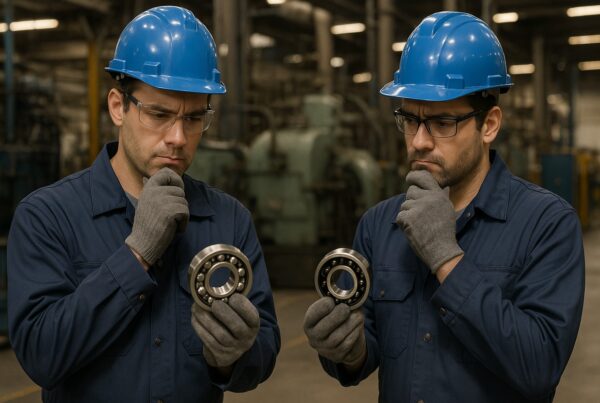SKF bearings are specifically designed to withstand high-temperature applications in the mining and cement industries.
Mining and cement are industries where machines are constantly operating at their limits: conveyor belts, crushers, mills, rotary kilns, and clinker coolers – all combine extreme loads, high temperatures, and abrasive dust. In these applications, the bearing is not just “one of many”, but a safety-critical component that directly affects production stability, maintenance costs and overall plant efficiency. SKF offers targeted bearing and lubrication solutions developed for extreme temperatures, which can drastically reduce downtime and unexpected failures.
Why is bearing selection so important in mining and cement production?
As a purchaser and decision-maker, your task is to choose the solution that offers the lowest risk in terms of operation, yet provides the best value for money. Bearing selection is a strategic decision here: it affects operating time utilization, maintenance capacity utilization and total cost of ownership (TCO). SKF’s bearings designed for extreme environments provide answers to precisely these pain points.
The challenges of extreme environments
Heat load and lubrication problems
Near rotary kilns and cooling beds, bearings run continuously in an environment of 200 – 350 °C. At such temperatures, conventional greases evaporate, carbonize, the film breaks down, and friction and wear increase. Continuous relubrication is physically impossible in many places.
Effects of contamination and abrasive dust
Cement dust and mine rock dust act as fine abrasives. If they get into the bearing, they cause micro-pitting, raceway wear, and premature fatigue. The selection of seals and lubricants is therefore critical.
Vibration, shock and heavy loads
Vibrating screens, crushers and high-inertia drives generate shock loads. Internal geometry, material quality and correct fitting clearance are key to service life.
Maintenance difficulties and cost implications
With difficult-to-access installation points, heat loads near the furnace and narrow shutdown windows, an unexpected bearing failure can cost millions per hour. The goal is planned maintenance and long, predictable operating times.
SKF bearing solutions for extremely high temperatures
Graphite-lubricated ball bearings designed for high temperatures
The SKF “High Temperature” bearing range uses a graphite-based dry lubrication concept that provides lubrication up to 350 °C without relubrication. Typical applications: clinker cooler rollers, auxiliary drives near kilns, slow-speed roller tables. Dry lubrication eliminates the need for relubrication, reducing maintenance and the risk of downtime.
SKF Explorer spherical roller bearings in the cement industry
SKF Explorer spherical roller bearings are made of special steel grades and have an optimized internal geometry, with high load and contamination tolerance. They provide longer fatigue life and stable running even in dusty, dynamic environments. Typical areas: grinders, crushers, conveyor drives
VA405 and VA406 bearings for vibrating screens
Special designs for vibrating equipment (e.g. VA405/VA406) feature vibration-resistant internal geometry and surface treatment. The PTFE-coated bushing of the VA406 version reduces fretting corrosion at the shaft-bushing contact, thus ensuring that the mounting fits retain their dimensional stability for longer.
Four-point contact ball bearings for heavy loads
For high axial and mixed loads, dimensionally stable even at high temperatures, with heat-treated raceways. Application: high-performance grinders, auxiliary drives for furnaces, heavy industrial gearboxes.
Lubrication solutions: the role of SKF industrial greases
LGHB 2 high-temperature grease
Calcium sulfonate complex thickener, mineral oil base, long service life up to 200 °C, high load capacity, excellent water and corrosion resistance. Proven in cement and mining industry bearings.
LGHC 2 water- and heat-resistant lubricant
Specially designed for harsh, wet and heat-stressed environments. Reliable lubricating film for sealed bearings in pumps, fans and conveyor drives.
Designation suffixes for SKF bearings designed for high-temperature applications
| Suffix | Description |
|---|---|
| -2F | Insert bearing for high-temperature applications, with fixing screw, shield on both sides and flange |
| -2Z | Deep groove ball bearing for high temperature applications, with shields on both sides |
| TF | Ball bearing unit for high-temperature applications, with insert bearing with fixing screw (YAR 2-2F serie) |
| VA201 | Bearing for high-temperature applications, with pressed steel cage, manganese phosphate-coated rings and rolling elements, C5 multiple radial clearance, polyalkylene glycol/graphite lubrication |
| VA208 | Bearing for high-temperature applications, with segmented graphite cage, manganese phosphate-coated rings and rolling elements, radial clearance equivalent to C5 multiple |
| VA228 | Bearing for high-temperature applications, with graphite cage, manganese phosphate-coated rings and rolling elements, and radial clearance equivalent to C5 multiple. |
Case studies and operational experience
An SKF VA208 bearing mounted on fire truck wheels operated without problems for more than 7 years, whereas previous conventional solutions lasted only 3-6 months. Dry lubrication eliminated relubrication operations, reduced failures due to grease degradation, and typically only required inspection of the bearing during scheduled shutdowns.
Why choose SKF bearings?
Longer service life = lower total life cycle cost
The higher initial cost of the components is quickly offset by less frequent replacements and reduced downtime. TCO is more favorable, especially at points close to the furnace.
Less downtime = higher production efficiency
Bearings optimized for extreme temperatures provide more stable operation, reducing the chance of unexpected shutdowns and increasing availability.
Safer operation and more predictable maintenance
The risk of sudden bearing failure or raceway damage is reduced, and the maintenance team can work with a more predictable task list.
SKF bearings and lubricants designed for high-temperature applications offer a new level of reliability in the extreme environments of mining and cement production. With dry lubrication solutions, Explorer geometry durability and vibration-resistant designs, downtime can be reduced and bearing life significantly increased. From a purchaser’s perspective, this approach means lower risk and a more favorable TCO.
Get in touch with us!
If you have any questions, feel free to contact our expert colleagues or visit our WEBSHOP!
Frequently asked questions (FAQ)
What is the maximum operating temperature for SKF high-temperature bearings?
Depending on the type, SKF high-temperature ball bearings and units can operate continuously at temperatures between 200 and 350 °C without relubrication, thanks to their graphite-based dry lubrication.
Do these bearings need to be lubricated?
The graphite lubricant film provides lifetime lubrication, so there is no need for relubrication. This results in significant reductions in maintenance time and costs.
In which industrial applications are they used?
- Rotary kilns and clinker coolers in the cement industry
- Conveyor belts and crushers in the mining industry
- Vibrating screens (e.g. VA405/VA406 special designs)
- Baking ovens and cooling conveyors (slow-speed roller chains)
Can they also be used in high-speed machines??
The graphite-lubricated designs for extreme temperatures are designed for low to medium speeds (typically < 100 r/min). For high speeds, standard or special SKF solutions with heat-resistant grease are recommended.
Which lubricants are recommended for harsh environments?
SKF LGHB 2 (high-temperature, high-load) and SKF LGHC 2 (water and heat resistant) lubricating greases. Both are suitable for cement and mining equipment.
How does the higher purchase price pay off?
Fewer unexpected downtimes, less frequent replacements, lower maintenance requirements – overall lower total cost of ownership (TCO) and more stable production.
Is there proof of durability?
In the rollers of a cement factory’s clinker cooler, the previous bearings had to be replaced every 3 months. With SKF graphite-lubricated bearings, the replacement interval increased to more than 3 years.



